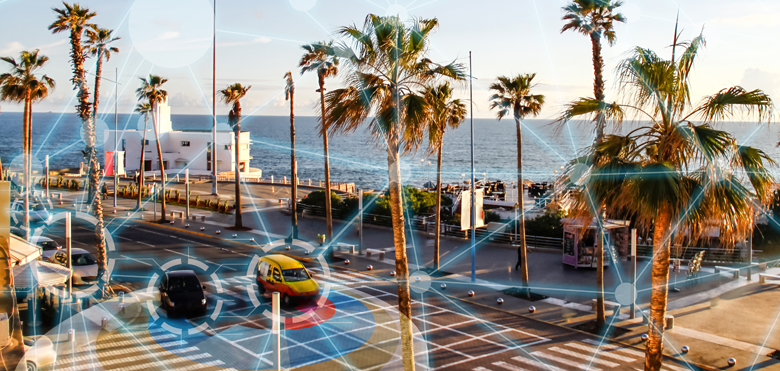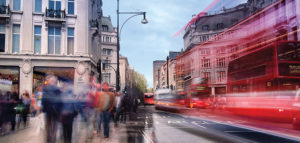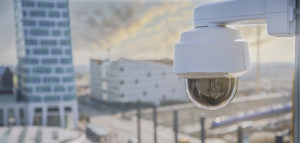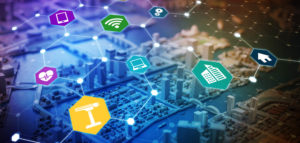Improving livability in smart cities: How cameras and sensors add value
According to a study from the UN, over half of humanity – 56.2 per cent, 3.5bn people – currently lives in cities and this number is estimated to rise to 5bn people (60.4 per cent) by 2030. This growth in urban populations has driven the adoption of technology in the management of city infrastructure and systems, with governments investing billions in so-called smart cities. But adoption of technology cannot come at the cost of a city’s livability, an essential factor in attracting people to urban environments for both personal and professional reasons.
Now the key question is: What makes a smart city attractive to its (potential) citizens? It is helpful to look at peoples’ most basic needs as traditionally represented by Maslow’s hierarchy of needs. In this model, safety and security come right after physiological needs such as food, water and sleep. In today’s cities, there are several factors that can turn into a threat of health, security or even lives and the cities have to respond to them. Little preparation, risk mitigation and the lack of possibility to send out an advance notice can lead to a far greater number of human losses, injuries or damage of property.
If you can’t monitor it, you can’t improve it
While people are working on improving early warning systems and preventing catastrophes, in the future it could be possible to identify risks at an even earlier stage. Going beyond recognizing patterns and taking the appropriate actions to improve a situation, the development of data analytics in combination with the data collected by cameras and sensors could make it possible to identify “near misses”.
Network security cameras can be of help to achieve this goal. Many of these cameras are today used for security and safety purposes, with a single use-case. However, with a scalable network video system you can add this type of analytics to your current system, or easily complement with additional cameras or sensors to supplement your system.
By monitoring an area constantly, devices can detect potential safety or security black spots, such as a very narrow cycle lane, heavy traffic at a busy junction, or children crossing the road near school bus stops. With the cameras identifying near misses, city planners can create a pedestrian crossing, install traffic lights or divert the traffic where needed to decrease the risk of a casualty.
Analyzing data can be our window into the future that will help to make the world a bit more sustainable and safe. Thus, it’s essential to collect as much data as we can. And until we’re ready to develop solutions that can predict and prevent scenarios, there are other systems that can be improved.
Keep it safe, clean and dry
For a city to be livable it needs to be low in health risks. City smog is one such risk. It can lead to irritated eyes and throats, and damage to the heart and lungs. Pollution detectors can spot changes in air quality caused by traffic, industrial activities, or weather, making it easier to take countermeasures. As an example, video-based traffic management in city centers can not only be used to verify the cause of the pollution, but can also be a tool to predict deterioration of air quality due to increased traffic. Such data can enable operators to make informed decisions about diverting or stopping traffic where necessary. The longer these data have been collected, the easier it is to make future predictions and plan ahead.
Poor air quality isn’t the only factor that can have detrimental effects on health. Noise pollution is the second most dangerous environmental threat of the modern day and can cause serious physical effects such as high blood pressure, gastritis and even heart attacks. A combination of acoustic sensors, AI analytics and video cameras can help to monitor the level and the source of noise, which can then be verified via the video footage. This level of detailed information can help operators to reduce loud sounds where necessary – for example, by optimizing traffic flow on noisy streets – and develop a strategy to tackle noise pollution in future.
Sensors play an equally critical role in the waste sector. There are still communities that don’t have a functioning waste management system. But piles of rubbish can turn quickly into a health threat (e.g. rats, bacteria, diseases etc.), while also constituting a fire risk (e.g. flammable substances, paper, unextinguished cigarette ends). To prevent these potential dangers, sensors on municipal dump sites and recycling depots can measure the fill-level and send a signal that arranges the pick-up; while cameras and visual analytics can avert fire spreading by detecting smoke in time. It’s worth noting that rubbish doesn’t contribute to the city’s aesthetics either when it comes to livability.
However, weather-based issues can pose a different type of threat to citizens’ security and safety, but they are harder to predict. That’s where environmental sensors can help. Early-warning systems allow operators to detect and respond to disasters in a timely manner; for example, a real-time measurement system might detect rain, and the data analytics and forecasting software can calculate if there is a risk of flooding. In this instance, with the help of IP cameras, it is easy to track if the water has crossed a certain mark, a critical evacuation need for cities close to rivers. Furthermore, the sensors can also measure the water quality to identify pollution. While a minor flood could seem harmless, contamination can turn it into a threat to health and nature.
The future is safe and livable
There are many ways to make a city smarter, more sustainable and safer, all of which positively impact livability. Economic benefits close the circle by creating cost-efficiencies through smart technologies to leave the city with resources to invest in improving services such as public transport, emergency services, and maintaining and improving public spaces, all of which combine to make a city a more desirable place to live.
Learn how Axis cameras can be used within the smart city concept.




